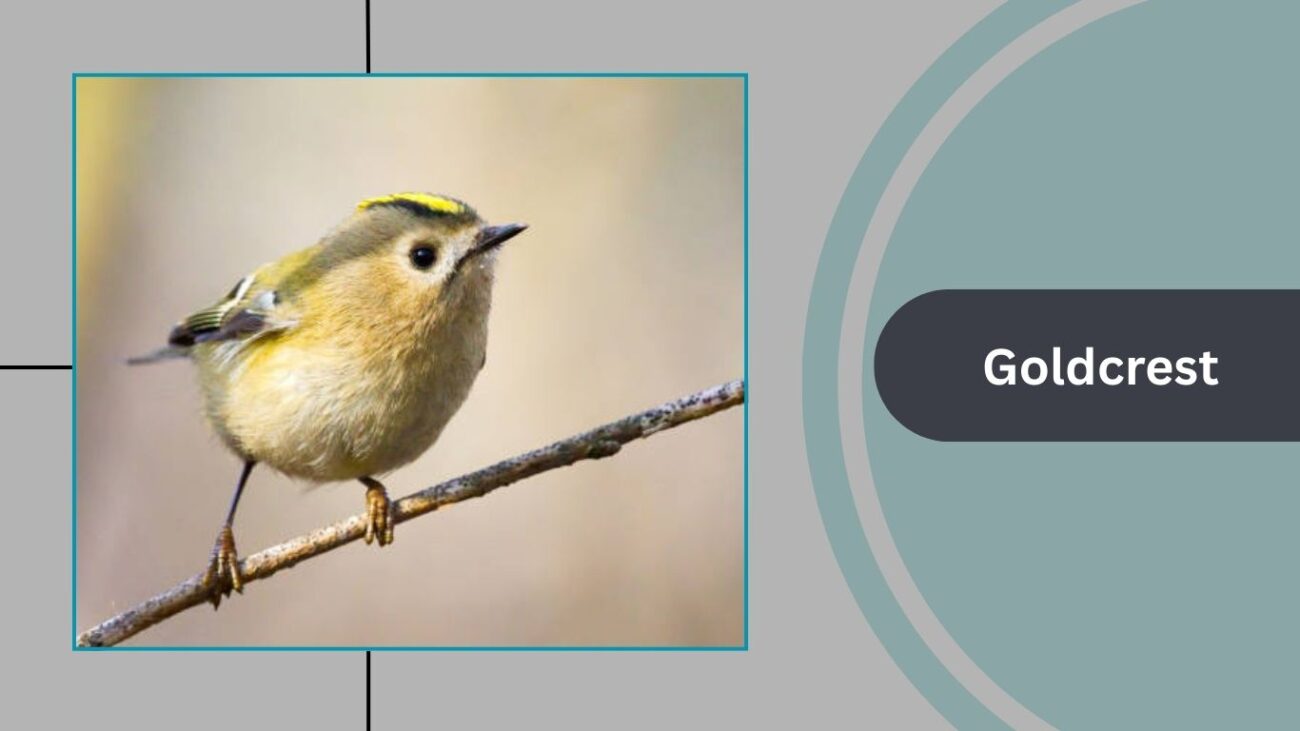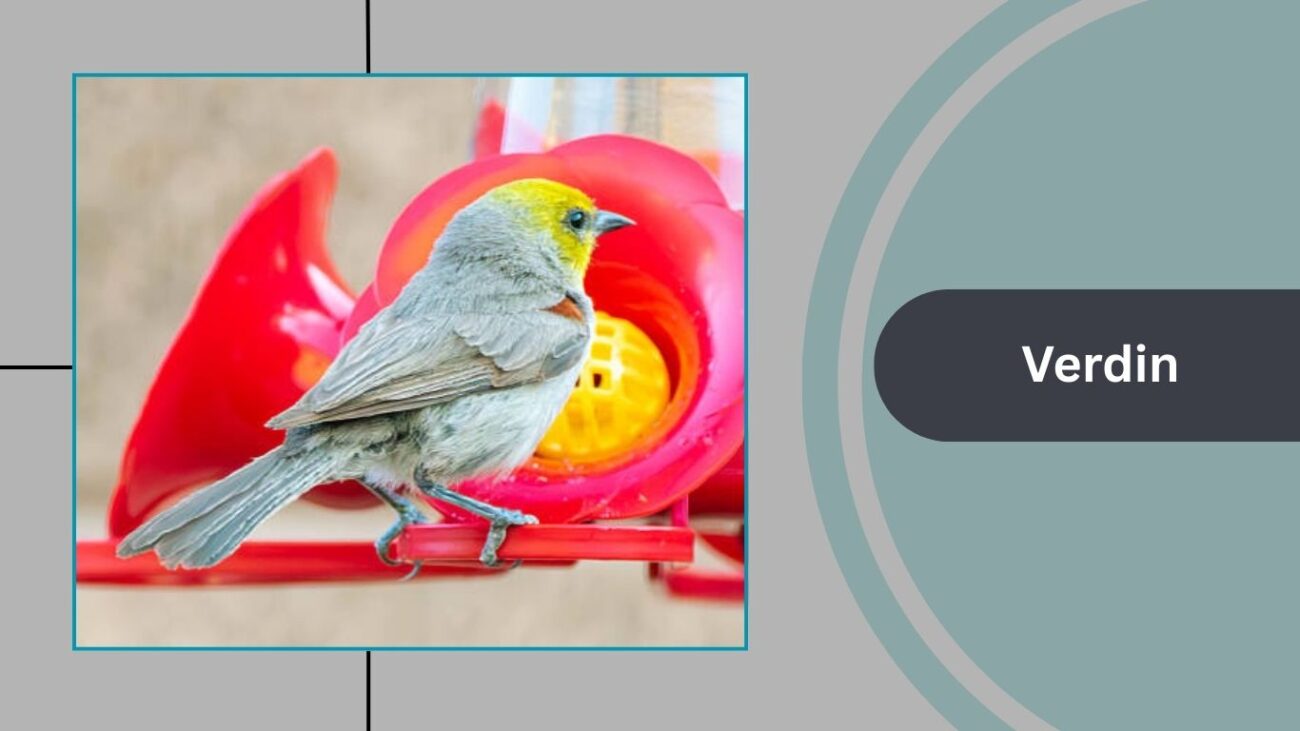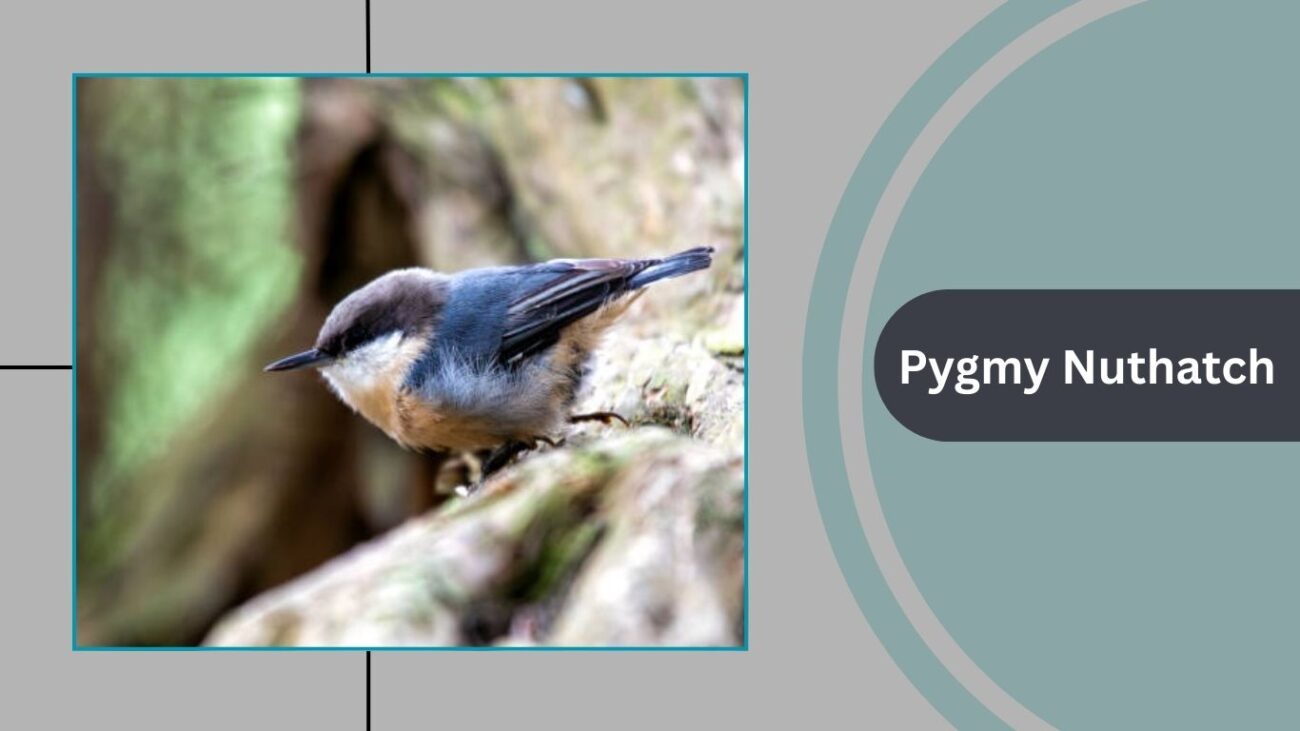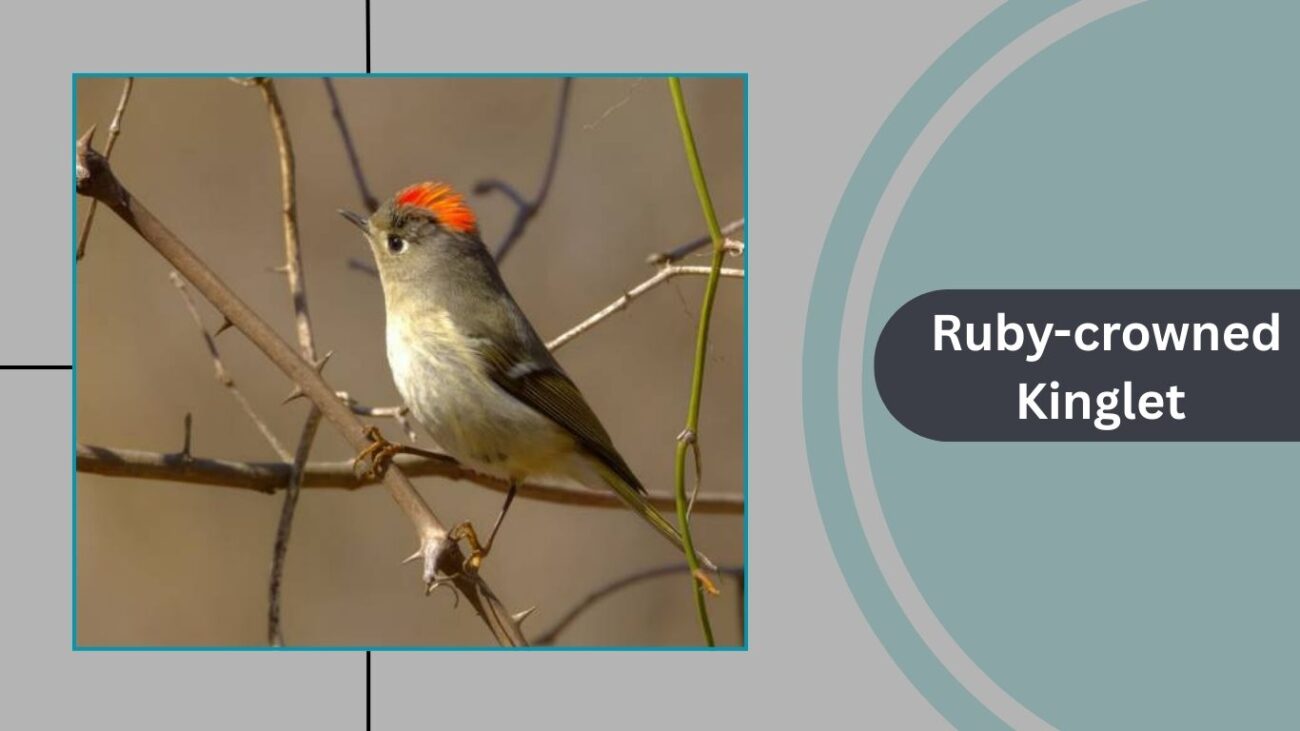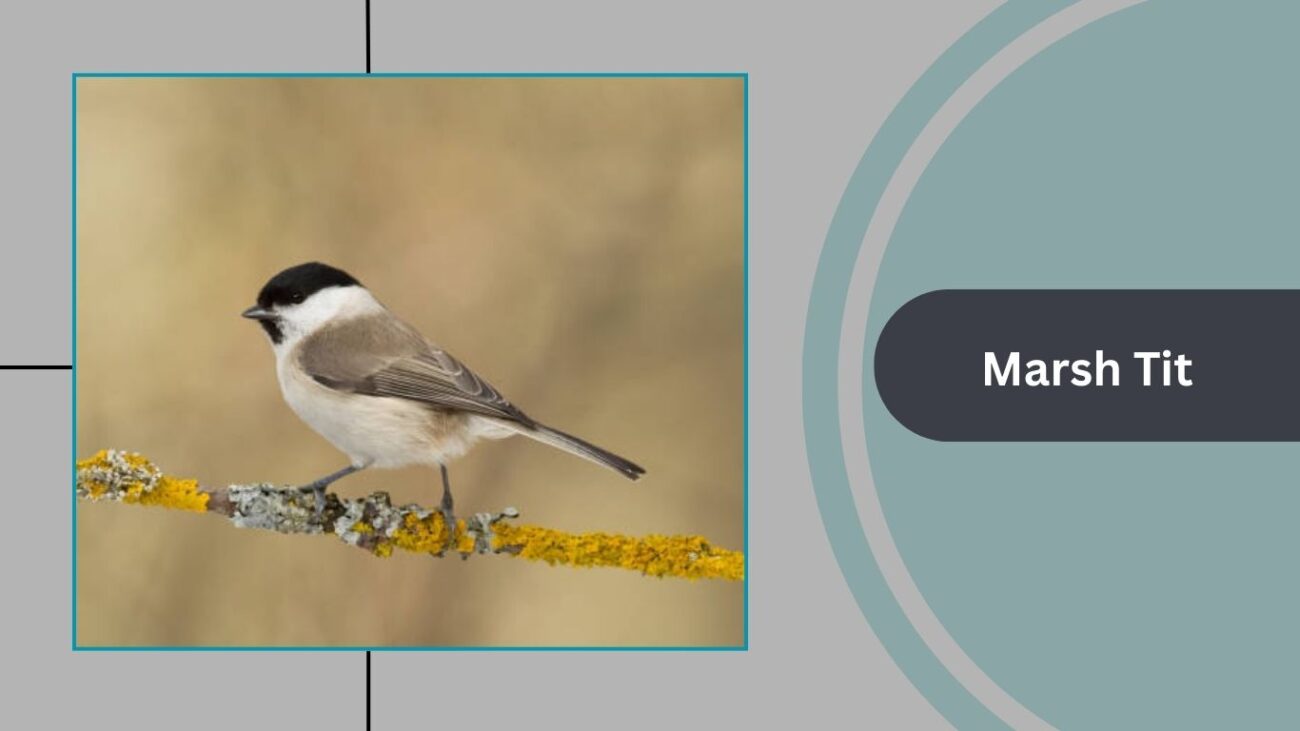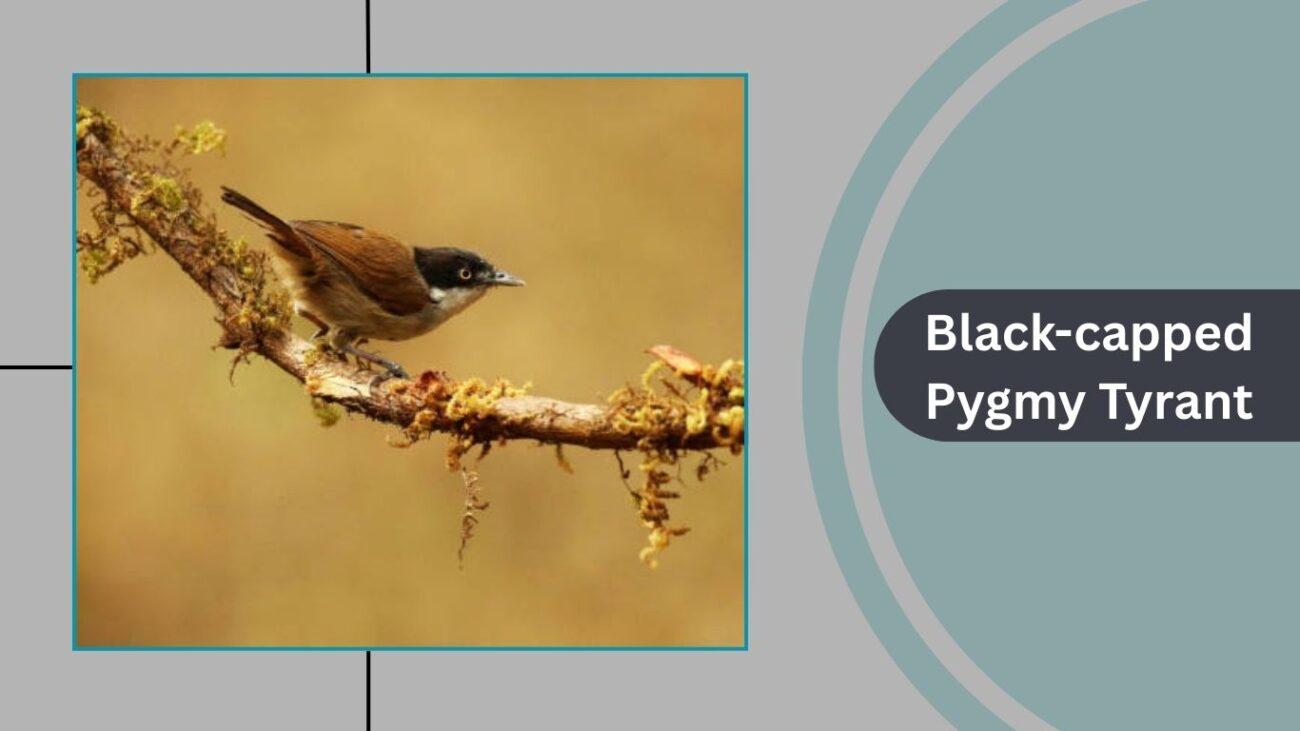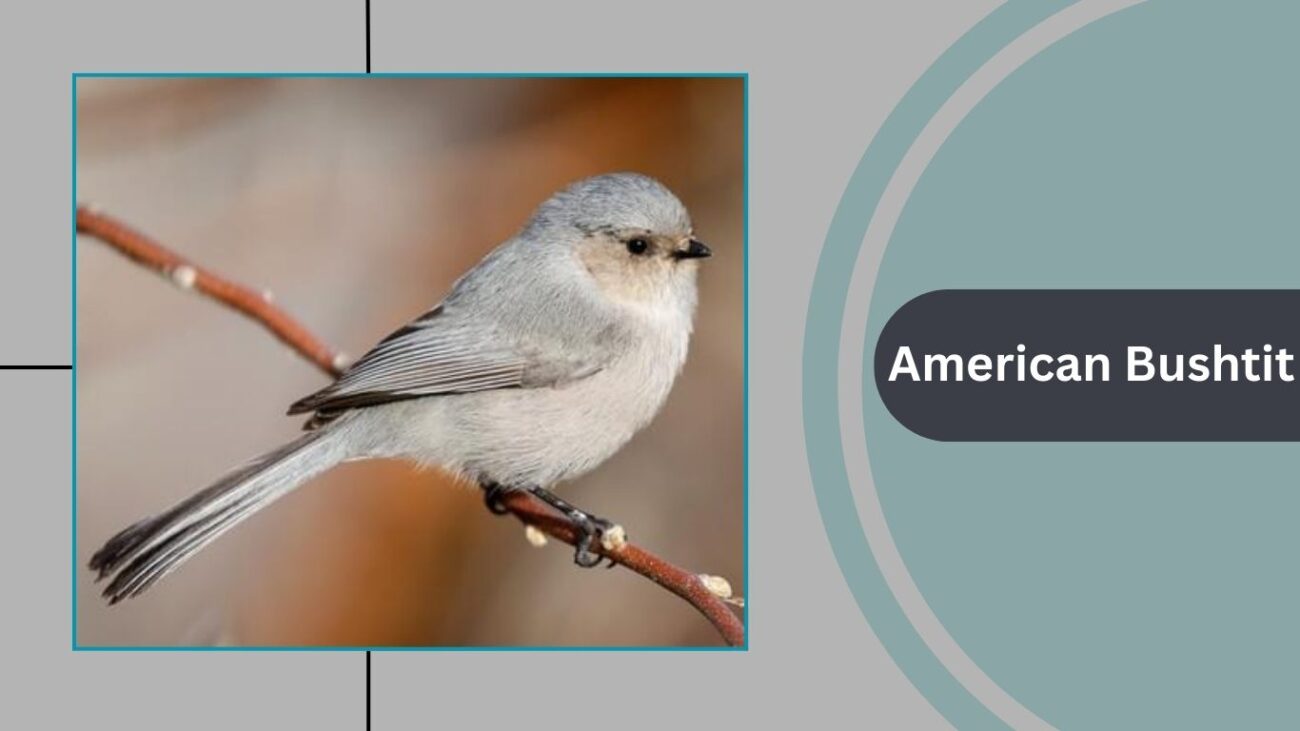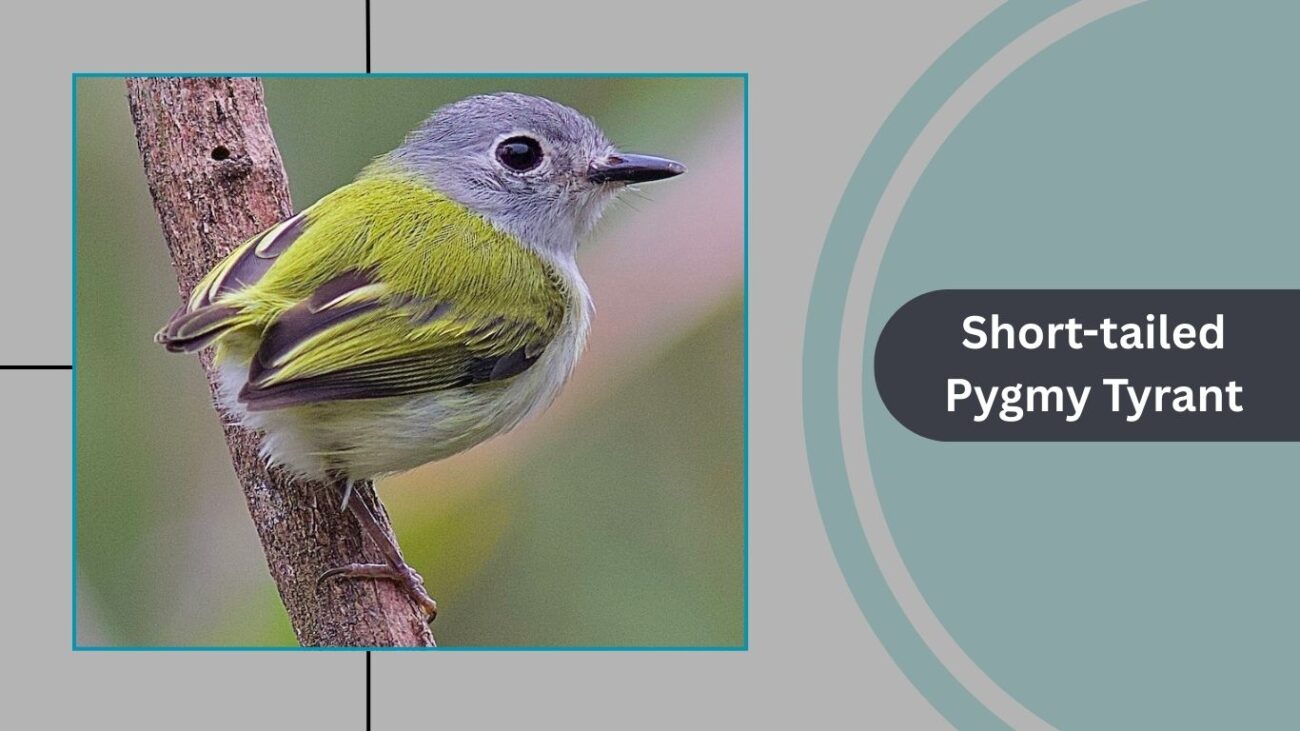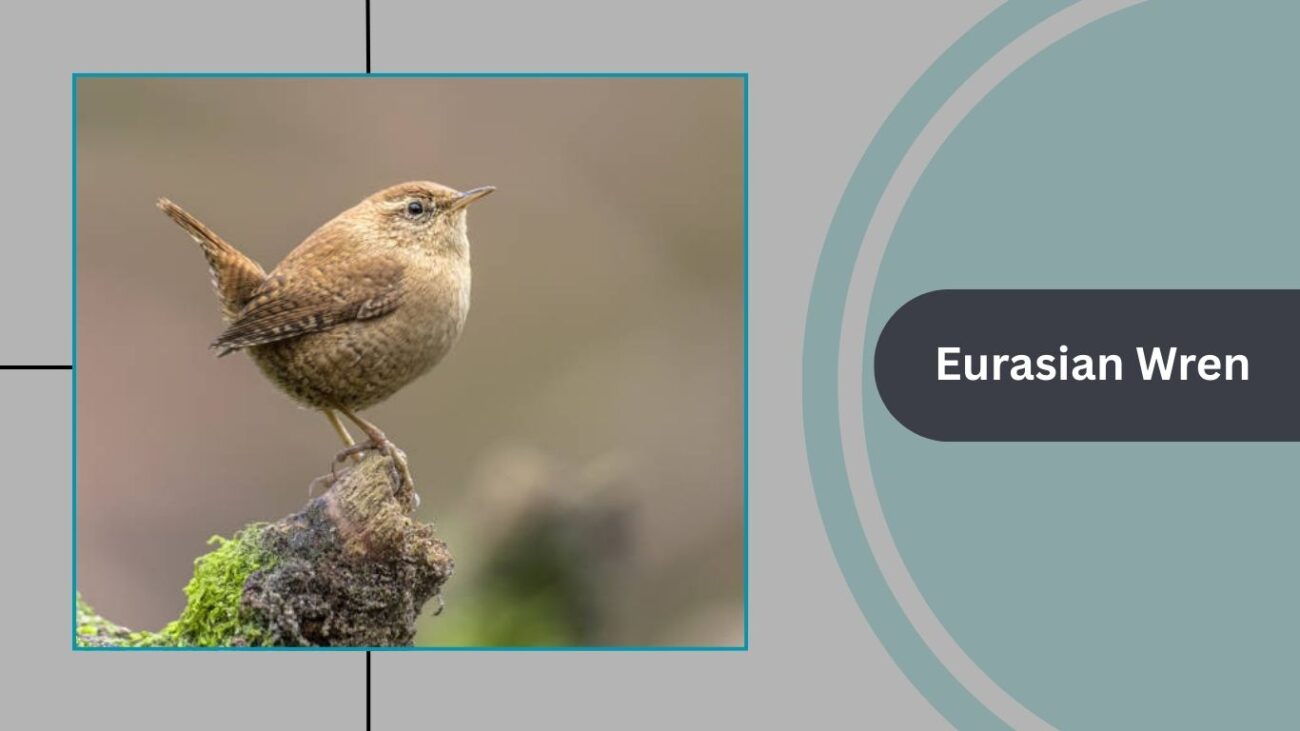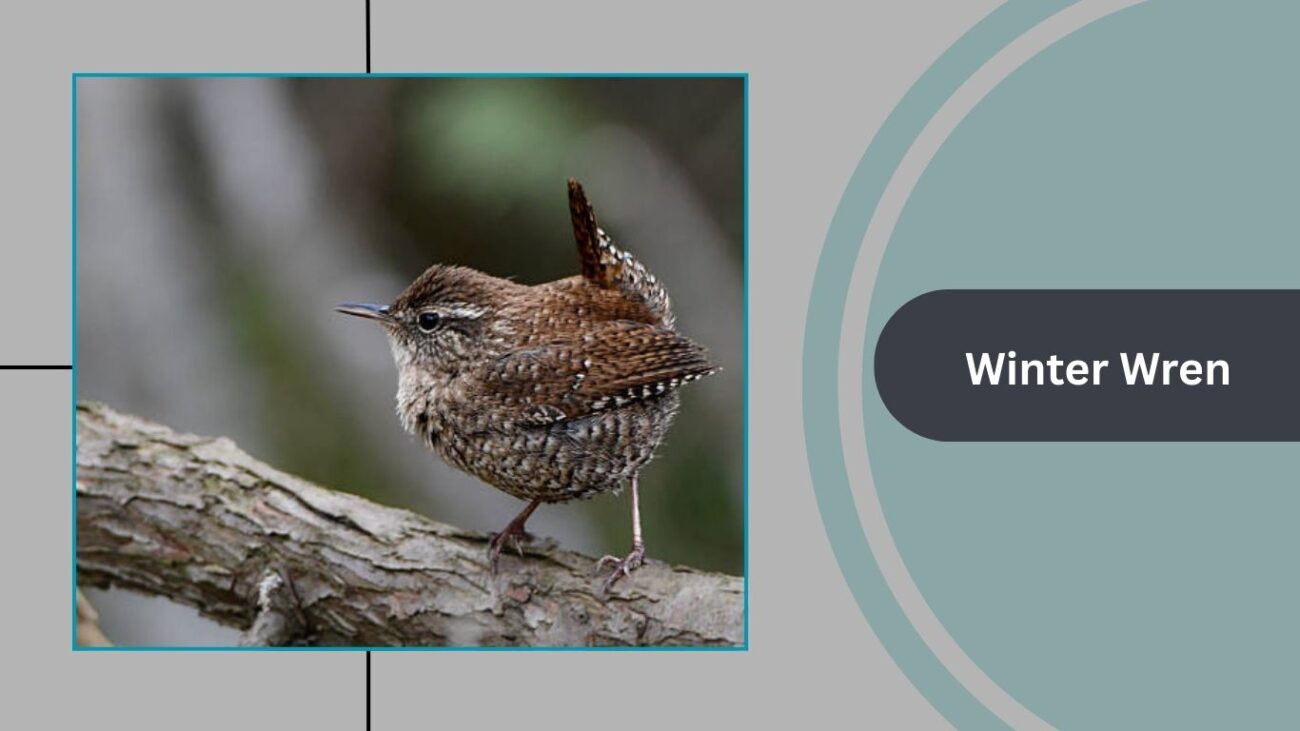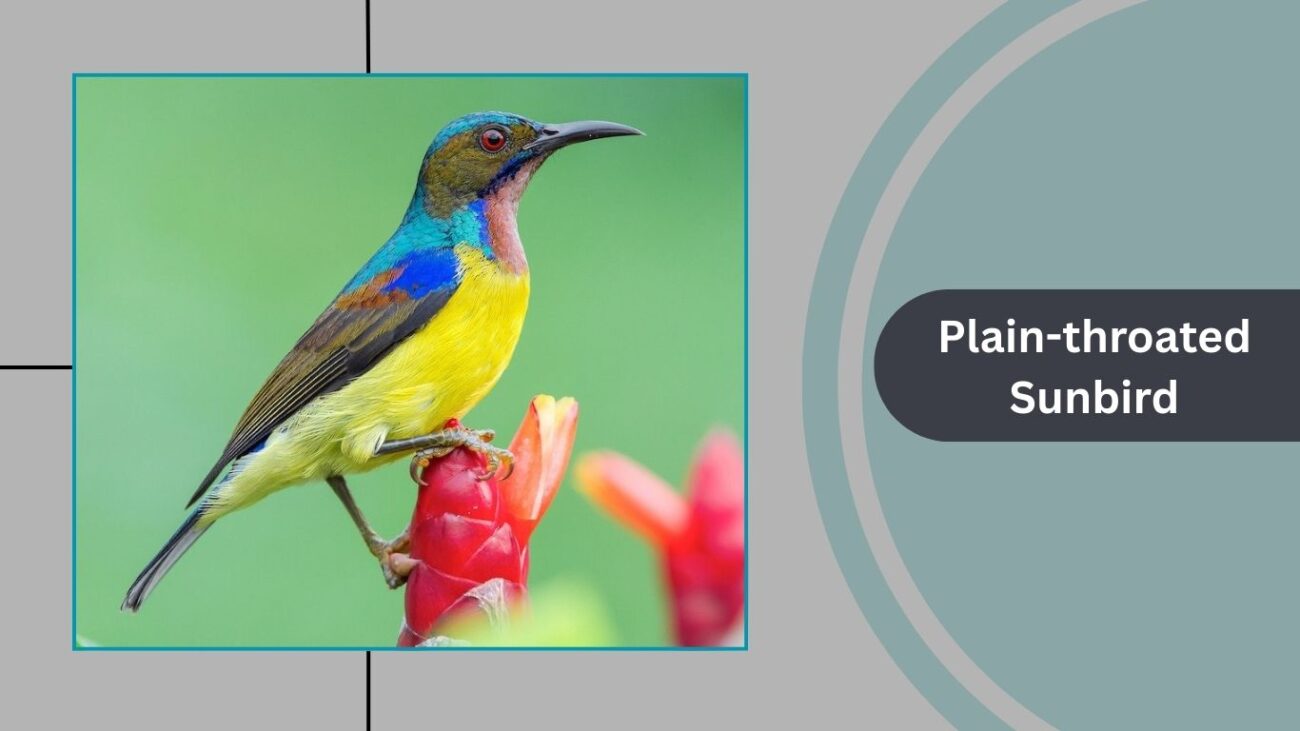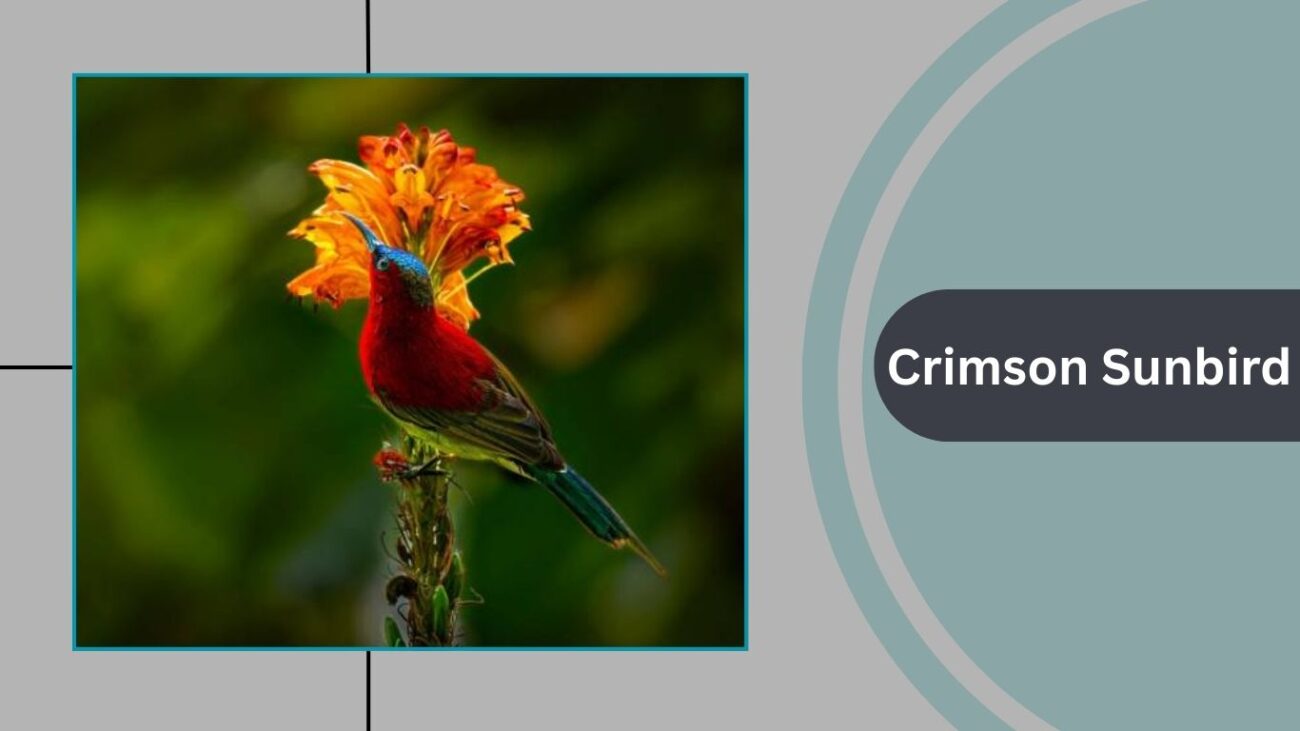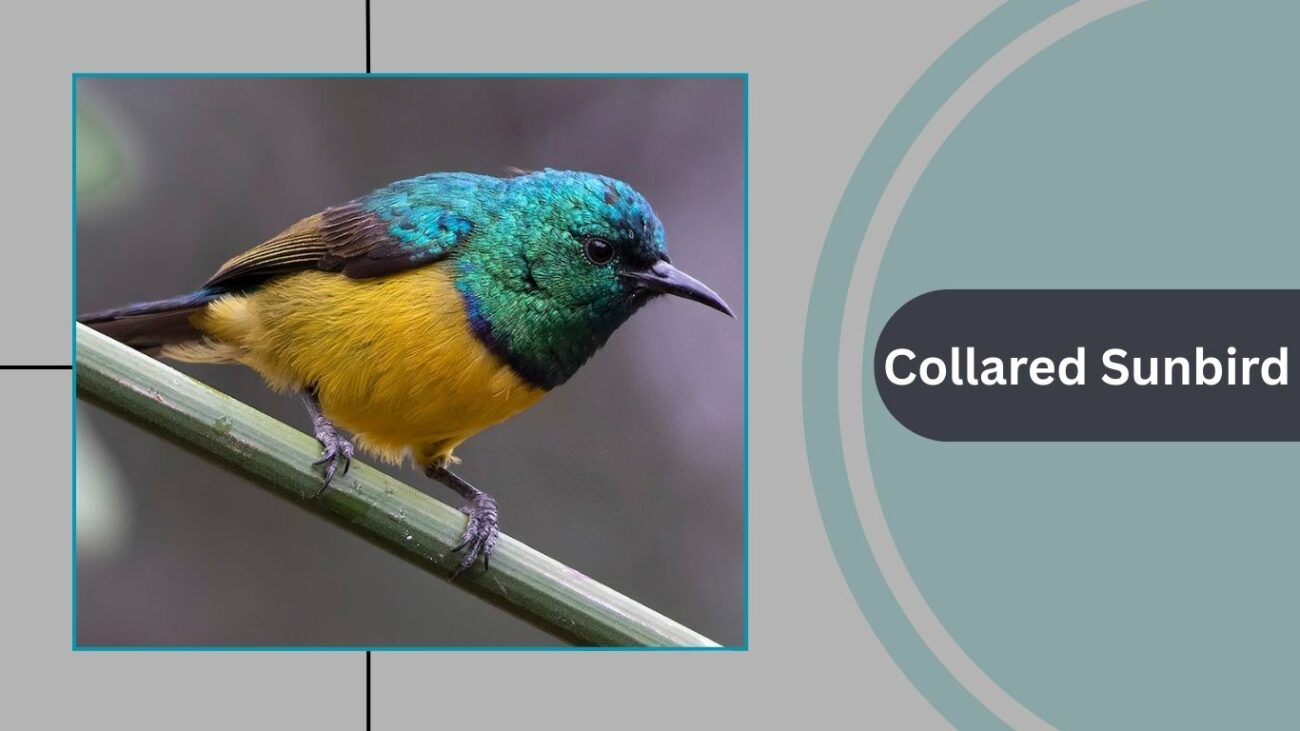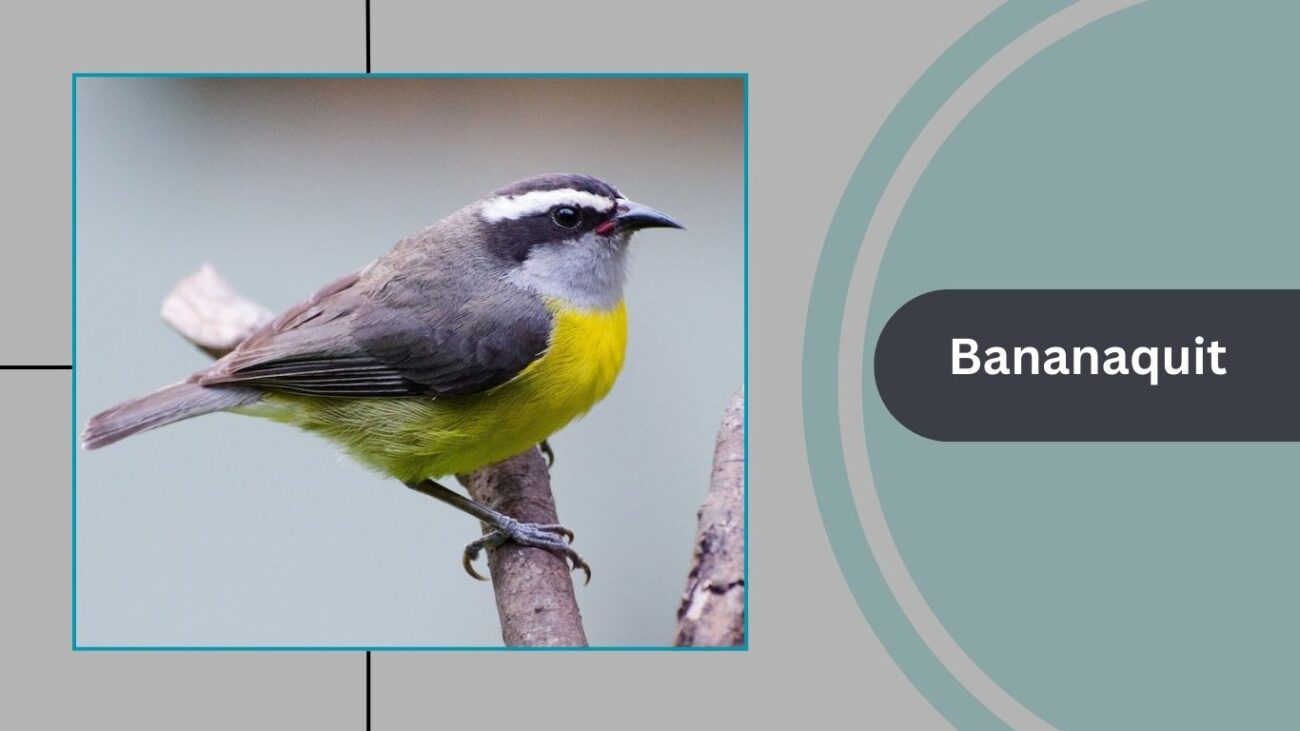Tiny birds capture our attention with their charm, delicate size, and surprising resilience. From the smallest kinglets in Europe to jewel-like sunbirds in Asia and the colorful pardalotes of Australia, these little creatures thrive in diverse habitats worldwide. Despite weighing just a few grams, they display remarkable energy, striking plumage, and unique behaviors. This list highlights 25 types of tiny birds that prove small size can still mean big beauty and character.
1. Goldcrest
The Goldcrest (Regulus regulus) is the smallest bird in Europe and one of the tiniest in the world. Despite its delicate size—about the weight of a coin—it is remarkably tough and survives in cold northern climates. Its golden crown stripe gives it a striking appearance, earning it the nickname “king of the birds.” This species is admired for its cheerful song, restless energy, and ability to thrive in coniferous forests year-round.
Identification
- Body length: 8–9 cm, wingspan: 13–16 cm, weight: 5–7 grams
- Distinctive golden stripe on the crown (orange in males, yellow in females), edged with black
- Olive-green upperparts with greyish underparts
- Small, thin, black beak adapted for catching tiny insects
- Pale wing bars and round, dark eyes that stand out against the face
- Constant flicking and fluttering movements when foraging
Habitat
Goldcrests primarily inhabit coniferous forests, especially spruce and fir, where dense needles provide food and cover. In winter, they may also move into mixed woodlands, hedgerows, and even suburban gardens. Their small size allows them to maneuver easily among twigs and foliage.
Diet
They feed mostly on small insects such as aphids, spiders, and tiny larvae. Their sharp eyesight and quick movements help them locate prey hidden among pine needles. During colder months, when insects are scarce, they occasionally consume seeds and other plant matter to survive.
Behavior
Goldcrests are extremely active and rarely remain still, often hovering or hanging upside down to pick insects from foliage. They are diurnal, starting their search for food at dawn and continuing until dusk. Their high-pitched “zee-zee-zee” call is a constant sound in forests. In harsh winters, they often form mixed flocks with tits and other small birds for better protection and foraging success.
2. Firecrest
The Firecrest (Regulus ignicapilla) is another tiny bird closely related to the Goldcrest but even more vividly colored. Sometimes called the “jewel of the forest,” it is recognized by its fiery orange crown and striking facial pattern. Although similar in size to the Goldcrest, its brighter markings make it easier to identify. Despite its fragile appearance, the Firecrest is hardy and active, often flitting through conifers and mixed woodlands.
Identification
- Body length: 9 cm, wingspan: 13–16 cm, weight: 5–7 grams
- Bright orange crown stripe in males (yellow in females), bordered by bold black lines
- White supercilium (eyebrow stripe) giving a distinctive facial look
- Olive-green upperparts and whitish underparts
- Fine, sharp bill suited for picking tiny insects
- Constantly flicks wings while foraging
Habitat
Firecrests prefer coniferous and mixed forests, especially areas with fir, spruce, and pine trees. They are also found in broadleaf woodlands with oak and beech. In southern Europe, they may inhabit more open woodland, scrub, and even urban parks.
Diet
Their diet mainly consists of insects and spiders, particularly aphids, caterpillars, and small flies. They actively search among leaves and branches, often hovering briefly to snatch hidden prey.
Behavior
Like the Goldcrest, Firecrests are very energetic and almost never stay still. They are bold for their size, often foraging lower in trees than Goldcrests and moving rapidly through branches. Their song is a thin, high-pitched trill, while their calls are sharper and more varied. During winter, they may join mixed-species flocks, but in breeding season, males defend territories aggressively with song and display.
3. Bushtit
The Bushtit (Psaltriparus minimus) is one of the tiniest songbirds in North America, often overlooked due to its muted colors but admired for its lively social behavior. These birds usually move in large flocks, darting through shrubs and trees in constant chatter. Though small, they are resilient and can be found in a wide range of habitats, from forests to suburban gardens.
Identification
- Body length: 10–11 cm, wingspan: 14–16 cm, weight: 5–6 grams
- Plain gray or brown plumage with subtle variations depending on region
- Rounded body and long, narrow tail
- Small, stubby black bill
- Dark eyes (except females in parts of the western U.S., which may have pale yellow eyes)
- Constant wing flicking and rapid movements in flocks
Habitat
Bushtits inhabit woodlands, chaparral, parks, and residential areas. They are especially common in the western United States, from Mexico up to Canada. They prefer areas with dense shrubs and trees for cover and nesting.
Diet
Their diet mainly consists of tiny insects, spiders, and eggs of other arthropods. They also feed on small seeds and berries, especially during colder months. Foraging is almost always done in groups, which helps them find food efficiently.
Behavior
Bushtits are highly social and rarely seen alone. They move in flocks of 10–40 birds, chattering continuously as they forage. Their flight is short and bouncy, moving quickly between shrubs and trees. In breeding season, pairs cooperate to build hanging, woven nests out of moss and spider webs. Their cooperative nature even extends to nesting, as multiple adults may help feed the young.
4. Verdin
The Verdin (Auriparus flaviceps) is a tiny songbird found in arid regions of North America, particularly the southwestern United States and northern Mexico. Despite its small size, it thrives in hot desert environments, where it is known for building intricate nests to regulate temperature. Its bright yellow head makes it stand out against the desert landscape, earning it recognition as one of the desert’s most charming little birds.
Identification
- Body length: 9–11 cm, wingspan: 16–18 cm, weight: 6–8 grams
- Distinctive yellow head and throat in adults (juveniles lack yellow coloring)
- Grayish body with a slightly darker tail
- Small, short, conical bill adapted for insect feeding
- Agile movements among shrubs and trees
Habitat
Verdins prefer desert scrub, thorny bushes, mesquite, and areas with scattered acacia trees. They are well adapted to dry climates, often seen flitting among desert vegetation. Unlike many small birds, they are rarely found in dense forests.
Diet
Their diet is primarily insect-based, including caterpillars, spiders, and beetles. They also consume nectar and small fruits when available. Verdins are known to visit flowers, much like hummingbirds, for nectar feeding.
Behavior
Verdins are resourceful builders, creating large, round stick nests. These nests serve as both breeding and roosting shelters, with separate nests used in summer and winter to regulate temperature. They are active and curious, moving quickly through shrubs while searching for food. Though usually solitary or seen in pairs, they can sometimes join mixed-species flocks during the non-breeding season.
5. Pygmy Nuthatch
The Pygmy Nuthatch (Sitta pygmaea) is one of the smallest nuthatches in the world, known for its cheerful calls and cooperative social habits. Found mainly in pine forests of western North America, this tiny bird is highly active, often climbing up and down tree trunks in search of food. Despite its size, it thrives in colder climates with the help of communal roosting.
Identification
- Body length: 10–11 cm, wingspan: 18–20 cm, weight: 10–11 grams
- Blue-gray upperparts and pale underparts with a buffy wash
- Brownish-gray crown and nape
- Short tail and strong claws for climbing tree bark
- Small, pointed bill adapted for probing bark crevices
- Quick, jerky movements on tree trunks and branches
Habitat
This species is closely tied to pine forests, especially ponderosa pine, but also inhabits mixed coniferous woodlands. They are most commonly seen at mid to high elevations, where large stands of mature pines provide nesting and feeding opportunities.
Diet
Their diet consists mainly of insects, spiders, and other arthropods found under tree bark. They also eat seeds, especially pine seeds, which they may wedge into bark crevices and hammer open with their bills. In winter, they rely more heavily on seeds and sometimes visit feeders for suet or sunflower seeds.
Behavior
Pygmy Nuthatches are highly social, often seen in flocks of 10–30 birds outside the breeding season. They exhibit cooperative breeding behavior, where additional “helper” birds assist in raising the young. At night, especially in winter, they roost communally in tree cavities, sometimes with more than 100 birds huddled together for warmth. Their constant high-pitched calls and acrobatic movements make them lively members of pine forests.
6. Brown Creeper
The Brown Creeper (Certhia americana) is a tiny woodland bird often described as “tree bark with wings” due to its perfect camouflage. Found across North America, it is known for its unique foraging style—spiraling upward around tree trunks while probing bark crevices for insects. Despite its small size, this bird plays an important role in forest ecosystems by controlling insect populations.
Identification
- Body length: 11–13 cm, wingspan: 16–18 cm, weight: 7–10 grams
- Brown, streaked plumage on the back, blending seamlessly with tree bark
- Whitish underparts that contrast with the darker back
- Thin, downcurved bill ideal for probing bark crevices
- Long, stiff tail feathers used for support when climbing
- Moves in short, jerky hops while creeping up tree trunks
Habitat
Brown Creepers inhabit mature deciduous and coniferous forests, often preferring large trees with rough bark. They can also be found in mixed woodlands, forest edges, and occasionally in wooded parks and gardens.
Diet
Their diet is primarily insectivorous, consisting of beetles, caterpillars, ants, spiders, and other small arthropods hidden beneath bark. In winter, they may supplement their diet with seeds and suet, especially at feeders.
Behavior
Brown Creepers are quiet and inconspicuous, usually seen creeping upward in a spiral along tree trunks before flying to the base of another tree to repeat the pattern. They are solitary or seen in pairs, but in winter they may join mixed-species flocks with chickadees and nuthatches. Their call is a thin, high-pitched sound that blends into the forest, making them easier to see than to hear.
7. Ruby-crowned Kinglet
The Ruby-crowned Kinglet (Corthylio calendula) is a restless, tiny bird known for its energetic behavior and vibrant hidden crown. Found across North America, it is especially noticeable during migration and winter when it visits backyards, woodlands, and shrublands. Despite its fragile look, it is remarkably hardy, enduring colder climates with nonstop activity.
Identification
- Body length: 9–11 cm, wingspan: 16–18 cm, weight: 6–10 grams
- Olive-green plumage with pale underparts
- Distinct white eye ring and wing bars
- Males possess a brilliant ruby-red crown patch (often concealed and only raised in excitement or courtship)
- Thin, straight bill adapted for insect feeding
- Constant wing flicking while foraging
Habitat
Ruby-crowned Kinglets inhabit coniferous forests during breeding season but are widely distributed in mixed woodlands, shrublands, and gardens during migration and winter. They adapt easily to a variety of habitats, making them common in both wild and suburban areas.
Diet
Their diet is mostly insect-based, including aphids, beetles, caterpillars, and spiders. They also consume eggs of insects and, during colder months, may feed on small fruits and seeds.
Behavior
These kinglets are extremely active, constantly flicking their wings and hopping among branches in search of prey. They are also bold singers, producing a loud, complex song far larger than their body size would suggest. During breeding, males display their hidden ruby crown to attract females or ward off rivals. In winter, they often join mixed flocks, helping them find food and avoid predators.
8. Golden-crowned Kinglet
The Golden-crowned Kinglet (Regulus satrapa) is another tiny and energetic bird, easily recognized by its striking yellow-and-orange crown. Closely related to the Ruby-crowned Kinglet, it is slightly smaller and even more resilient, surviving harsh northern winters in coniferous forests. Its restless nature and sharp, high-pitched calls make it a lively presence in the treetops.
Identification
- Body length: 8–9 cm, wingspan: 14–17 cm, weight: 5–8 grams
- Olive-green upperparts with pale gray underparts
- Bold black and white face pattern
- Distinct golden-yellow crown with an orange center in males (bright yellow in females)
- Tiny, thin bill adapted for insect feeding
- Constant wing flicking and quick hopping movements
Habitat
Golden-crowned Kinglets prefer coniferous forests, especially spruce, fir, and hemlock stands. In winter, they may wander into mixed or deciduous forests, and sometimes appear in suburban gardens and parks.
Diet
They feed primarily on small insects, spiders, and insect eggs hidden in conifer needles and bark crevices. During winter, they may also consume seeds and tiny berries when insects are scarce.
Behavior
Golden-crowned Kinglets are highly active, moving restlessly among tree branches in search of food. They are cold-hardy, enduring freezing temperatures by foraging constantly and roosting together in groups for warmth. Their call is a high-pitched series of “tsee” notes, while their song is a rapid, ascending trill. During courtship, males raise their bright orange crown feathers in display to attract females or assert dominance.
9. Willow Tit
The Willow Tit (Poecile montanus) is a small, stocky songbird found across Europe and parts of Asia. Known for its soft, nasal calls and preference for damp woodlands, it is often confused with the Marsh Tit but can be distinguished by subtle features and behavior. Despite its small size, the Willow Tit is resourceful, storing food for winter and thriving in colder environments.
Identification
- Body length: 11–13 cm, wingspan: 17–20 cm, weight: 9–12 grams
- Black cap and nape with a small, neat bib on the throat
- Pale cheeks and underparts contrasting with brownish upperparts
- Short, stout bill suitable for seeds and insects
- Lacks the glossy sheen on the cap that the Marsh Tit shows
- Slightly longer, paler wing panel compared to Marsh Tit
Habitat
Willow Tits prefer damp woodlands, willow thickets, alder groves, and forest edges. They are also found in scrubby areas, parks, and gardens, especially near water. Unlike many small birds, they nest in rotting wood, often excavating their own nesting cavities.
Diet
Their diet consists of insects, spiders, and seeds. They are also known for food caching—storing seeds and insects in tree crevices during autumn to retrieve later in winter. This adaptation helps them survive harsh, cold months.
Behavior
Willow Tits are active but less restless than kinglets, moving methodically through branches in search of food. They are more secretive and shy, often staying in dense cover. Their call is a distinctive nasal “zee-zee” note, softer than the Marsh Tit’s call. Socially, they are usually seen in pairs or small family groups, occasionally joining mixed flocks in winter.
10. Marsh Tit
The Marsh Tit (Poecile palustris) is a tiny woodland bird that closely resembles the Willow Tit but has its own distinct traits. Despite the name, it is not strongly tied to marshy areas; instead, it thrives in deciduous woodlands, hedgerows, and gardens. Known for its sharp “pitchoo” call and quick, darting movements, the Marsh Tit is a familiar yet easily overlooked bird in Europe and parts of Asia.
Identification
- Body length: 11–12 cm, wingspan: 18–20 cm, weight: 9–12 grams
- Glossy black cap and neat black bib under the beak
- Whitish cheeks and underparts contrasting with soft brown upperparts
- Small, conical bill adapted for seeds and insects
- Compared to Willow Tit, the Marsh Tit has a shinier cap and smaller, neater bib
- Sleeker overall appearance with less pale edging on wings
Habitat
Marsh Tits inhabit deciduous woodlands, especially oak and beech forests, but also adapt to parks, orchards, and large gardens. They prefer areas with dense undergrowth for foraging and nesting but are not limited to wetland areas as their name might suggest.
Diet
Their diet is a mix of insects, spiders, seeds, and berries. They are less likely to cache food compared to Willow Tits, relying more on daily foraging. During autumn and winter, they frequent bird feeders, especially for sunflower seeds.
Behavior
Marsh Tits are active and bold for their size, darting quickly between branches and calling with a sharp, distinctive “pitchoo” sound. Unlike Willow Tits, they are more likely to forage openly, though still cautious. They are mostly seen in pairs or small family groups and may join mixed winter flocks with tits and other small birds. Their adaptability helps them thrive in a variety of landscapes, including suburban areas.
11. Black-capped Pygmy Tyrant
The Black-capped Pygmy Tyrant (Myiornis atricapillus) is one of the smallest passerine birds in the world, often considered the tiniest bird in the Americas. Found in Central and South America, this tiny flycatcher is renowned for its delicate size and lively behavior. Despite weighing only a few grams, it is energetic, vocal, and a skilled insect hunter in tropical forests.
Identification
- Body length: 6.5–7 cm, weight: around 4 grams
- Distinct black cap contrasting with pale underparts
- Olive-green back and wings with lighter underparts
- Tiny, flat bill adapted for catching small insects
- Short tail and rounded body shape
- Constant wing flicking when perched
Habitat
This species inhabits tropical and subtropical lowland forests, forest edges, and secondary growth. It is often found in dense foliage, where its small size and rapid movements make it difficult to spot.
Diet
The Black-capped Pygmy Tyrant feeds primarily on small insects, including gnats, flies, and other tiny arthropods. It catches prey by making quick sallies into the air or by gleaning from foliage.
Behavior
Extremely active, this bird flits constantly among leaves and branches in search of food. It often hunts alone or in pairs, occasionally joining mixed-species flocks. Its high-pitched calls are frequent and sharp, helping it communicate in dense vegetation. Despite its size, it defends its territory aggressively against other tiny insectivores.
12. Common Tailorbird
The Common Tailorbird (Orthotomus sutorius) is a tiny, energetic songbird native to South and Southeast Asia. Famous for its clever nest-building skills, it stitches leaves together using plant fibers, spider silk, or cotton threads to create a cradle-like nest—hence the name “tailorbird.” This resourceful bird is well adapted to both forests and urban environments, making it one of the most familiar small birds across its range.
Identification
- Body length: 10–14 cm, wingspan: around 16–18 cm, weight: 6–10 grams
- Greenish upperparts with whitish underparts
- Reddish-brown crown and nape, especially noticeable in breeding adults
- Long, narrow tail often held upright
- Thin, curved bill adapted for insect feeding
- Distinctive loud “cheewit-cheewit” call
Habitat
The Common Tailorbird thrives in scrublands, gardens, parks, agricultural fields, and forest edges. It is highly adaptable and commonly seen in villages and cities, often flitting through hedges, bushes, and small trees.
Diet
This bird is primarily insectivorous, feeding on caterpillars, beetles, grasshoppers, and spiders. It also consumes small berries and nectar on occasion. Its slender bill helps it glean insects from leaves and flowers.
Behavior
Tailorbirds are restless, constantly moving through shrubs and low vegetation while calling loudly. They are best known for their nest-building behavior: females stitch leaves together to form a secure cradle, lining it with soft material. They are territorial during the breeding season and can be surprisingly bold despite their small size.
13. American Bushtit
The American Bushtit (Psaltriparus minimus) is a tiny, highly social bird found across western North America. Despite its plain appearance, it is lively and endearing, often seen in large, chattering flocks that sweep through woodlands and gardens. Known for their communal nature and complex woven nests, these small birds play an important role in controlling insect populations.
Identification
- Body length: 10–11 cm, wingspan: 14–16 cm, weight: 5–6 grams
- Soft gray or brownish plumage, with slight regional color variations
- Long, narrow tail relative to body size
- Small, round body with a tiny, short bill
- Females in some regions may show pale or yellowish eyes, while males have dark eyes
- Quick, fluttering wing beats and constant group movement
Habitat
American Bushtits inhabit woodlands, chaparral, parks, and residential gardens, especially in the western United States and Mexico. They prefer areas with dense shrubs and trees that provide both food and nesting sites.
Diet
Their diet consists mainly of tiny insects, including aphids, caterpillars, and beetles, along with spiders and insect eggs. They may also feed on small seeds and berries, particularly in colder months when insects are scarce.
Behavior
Extremely social, American Bushtits move in flocks of 10–40 birds outside the breeding season, foraging together with constant contact calls. They are known for constructing large, hanging nests made of moss, spider silk, and plant fibers, shaped like soft pouches. Cooperative breeding sometimes occurs, with additional adults helping to raise the young. Their cheerful chatter and flitting movements make them a familiar sight in gardens and forests alike.
14. Short-tailed Pygmy Tyrant
The Short-tailed Pygmy Tyrant (Myiornis ecaudatus) is one of the smallest bird species in the world, rivaling even the Black-capped Pygmy Tyrant in size. Native to South America, this minuscule flycatcher is barely larger than a hummingbird and is admired for its constant activity and sharp, insect-catching skills. Despite its size, it is a confident and agile bird, thriving in tropical forests.
Identification
- Body length: 6.5–7 cm, weight: about 4 grams
- Olive-green upperparts with pale underparts
- Very short tail, which gives the bird a compact, rounded look
- Small, flat bill adapted for snatching insects midair
- Subtle facial markings with a faint eye ring
- Quick, restless movements among foliage
Habitat
This species is found in tropical lowland forests, secondary growth, and forest edges across the Amazon Basin. It prefers dense vegetation and understory habitats where it can forage for insects in cover.
Diet
The diet is primarily composed of small insects such as flies, gnats, and tiny beetles. It hunts actively, often making short flights to snatch prey from the air or gleaning it from leaves.
Behavior
The Short-tailed Pygmy Tyrant is constantly moving, hopping through dense vegetation or darting out to catch insects midair. Its calls are high-pitched and rapid, often heard before the bird is seen. Though usually solitary or in pairs, it may also join mixed-species flocks for protection and better feeding opportunities. Its tiny size makes it hard to spot, but its energetic behavior often gives it away.
15. Spotted Pardalote
The Spotted Pardalote (Pardalotus punctatus) is one of the most colorful and smallest songbirds in Australia. Often called the “diamond bird” because of its bright plumage and spotted markings, it is a favorite among birdwatchers. Despite its tiny size, it has a loud, clear call and is known for nesting in unusual places, including tunnels dug into the ground.
Identification
- Body length: 8–10 cm, wingspan: about 15–18 cm, weight: 8–11 grams
- Brightly colored plumage with olive-yellow underparts
- Black crown covered with distinct white spots
- Red or yellow rump patch, depending on subspecies
- Small, fine bill suited for feeding on insects
- Striking, jewel-like appearance compared to many other tiny birds
Habitat
Spotted Pardalotes are found across southeastern and southwestern Australia in eucalyptus forests, woodland edges, gardens, and urban areas. They prefer habitats with tall gum trees, where they forage in the canopy.
Diet
Their diet mainly consists of insects, lerps (sweet secretions from sap-sucking insects), and other small arthropods. They play an important role in controlling insect populations in eucalyptus forests.
Behavior
Spotted Pardalotes are active foragers, often seen high in treetops searching for food. They are usually found in pairs or small family groups. Their nesting behavior is unique—unlike most small birds, they dig burrows in earth banks, slopes, or even garden beds, where they build their nests. They are also known for their loud, repetitive “sleep-may” call that carries well through the forest.
16. Cape Penduline Tit
The Cape Penduline Tit (Anthoscopus minutus) is among the smallest bird species in Africa, admired for its skillful nest-building and tiny size. Despite its delicate frame, it survives in semi-arid habitats and is known for constructing intricate, pendulous nests with a false entrance to deter predators. Its adaptability and clever survival strategies make it one of the most fascinating little birds on the continent.
Identification
- Body length: 8–9 cm, weight: 6–7 grams
- Soft grayish-brown plumage with pale underparts
- Slight yellow wash on the chest in some individuals
- Tiny, short, pointed bill suited for insect feeding
- Rounded wings and short tail giving it a compact appearance
- Inconspicuous coloring that blends with dry habitats
Habitat
The Cape Penduline Tit inhabits savannas, thorn scrub, and semi-arid woodlands across southern Africa. It prefers regions with acacia or thorny shrubs, which provide both food and nesting sites.
Diet
Its diet consists mainly of small insects, spiders, and larvae gleaned from leaves and bark. Occasionally, it supplements its food with nectar and tiny seeds.
Behavior
Cape Penduline Tits are best known for their elaborate, woven nests, which are shaped like hanging pouches with false entrances to confuse predators. They are active, social, and often seen in pairs or small groups. Their calls are high-pitched and continuous, helping them keep contact while foraging. Despite their size, they display remarkable intelligence in nest construction and predator avoidance.
17. Eurasian Wren
The Eurasian Wren (Troglodytes troglodytes) is one of the smallest birds in Europe and Asia, well known for its loud and powerful song that contrasts sharply with its tiny size. This bird is often seen darting through undergrowth, with its tail cocked upright, giving it a distinctive look. Despite its small frame, it is hardy and widespread, thriving in a variety of habitats from forests to gardens.
Identification
- Body length: 9–10 cm, wingspan: 13–17 cm, weight: 8–12 grams
- Brown, finely barred plumage with darker streaks
- Short, rounded wings and a stubby, upright tail
- Pale eyebrow stripe (supercilium) visible above the eye
- Thin, slightly curved bill adapted for insect feeding
- Compact, round body with restless movements
Habitat
Eurasian Wrens inhabit a wide range of habitats, including woodlands, scrub, hedgerows, rocky areas, and gardens. They prefer dense vegetation or ground cover for foraging and nesting. In colder regions, they often stay close to sheltered spots for warmth and protection.
Diet
Their diet mainly consists of insects, spiders, and larvae. They forage on the ground or in low vegetation, probing bark crevices and leaf litter for prey. Occasionally, they may take small seeds, but insects make up the bulk of their diet.
Behavior
Eurasian Wrens are highly active, constantly flitting about with quick, jerky movements and cocked tails. They are famous for their loud, complex, and melodious song, which can be heard throughout the year. Males often build multiple nests to attract females, who then choose one for raising their brood. In winter, these wrens sometimes roost communally in nest boxes or cavities to conserve heat.
18. Winter Wren
The Winter Wren (Troglodytes hiemalis) is a tiny, energetic songbird native to North America. Closely related to the Eurasian Wren, it shares many physical traits but is recognized as a separate species. Despite its small size, the Winter Wren is famous for its loud, bubbly, and complex song that echoes through forests. It thrives in dense undergrowth, where it scurries mouse-like while searching for food.
Identification
- Body length: 8–10 cm, wingspan: 13–17 cm, weight: 8–11 grams
- Rich brown plumage with fine barring on wings, tail, and underparts
- Very short tail, often held cocked upright
- Pale eyebrow stripe (supercilium) above the eye
- Small, thin, slightly curved bill for insect feeding
- Compact, round body with restless, quick movements
Habitat
Winter Wrens prefer dense, moist forests, especially coniferous and mixed woodlands with heavy undergrowth. They are often found near fallen logs, brush piles, and tangled vegetation that provide cover for foraging and nesting.
Diet
Their diet consists mainly of insects, spiders, and other small invertebrates. They search in bark crevices, moss, and leaf litter for hidden prey. In colder months, they may also take insect eggs and occasionally small seeds.
Behavior
Winter Wrens are energetic and constantly in motion, hopping and creeping low to the ground like tiny woodland mice. They are best known for their remarkably long and musical song—sometimes lasting up to 10 seconds—that fills the forest with trills and cascades. During winter, they are solitary and secretive, but in breeding season, males become territorial and may build multiple nests to attract females.
19. Pacific Wren
The Pacific Wren (Troglodytes pacificus) is a tiny songbird of the Pacific coast of North America, once considered the same species as the Winter Wren. Despite its size, it is best known for having one of the most elaborate and long-lasting songs in the bird world. This bird thrives in dark, damp forests where it forages low to the ground, darting through moss and fallen logs like a tiny woodland spirit.
Identification
- Body length: 8–10 cm, wingspan: 13–17 cm, weight: 8–11 grams
- Rich, dark brown plumage with heavy barring on wings, flanks, and tail
- Very short, stubby tail, usually held upright
- Faint pale eyebrow stripe (less distinct than in Winter Wren)
- Thin, slightly curved bill adapted for insect feeding
- Small, round body with rapid, mouse-like movements
Habitat
Pacific Wrens favor dense, moist coniferous forests, especially old-growth stands with mossy logs, thick undergrowth, and fallen timber. They are often found in shaded ravines, near streams, and in tangled vegetation.
Diet
Their diet is composed mainly of insects, spiders, and small invertebrates. They probe moss, bark, and leaf litter for food, often foraging in dark, hidden areas where other birds rarely search.
Behavior
Pacific Wrens are secretive but extremely active, flitting close to the ground and squeezing into tight spaces while foraging. Their song is a long, rapid, and musical series of trills and whistles, lasting over 20 seconds—astonishingly long for such a tiny bird. They are solitary in winter but become highly territorial in the breeding season, with males defending singing perches deep inside forest territories.
20. Plain-throated Sunbird
The Plain-throated Sunbird (Anthreptes malacensis) is a small, nectar-feeding bird native to South and Southeast Asia. It is often compared to hummingbirds due to its feeding style, hovering at flowers to sip nectar, though it also perches while feeding. Males display beautiful iridescent plumage, while females are plainer, making them less conspicuous in the dense foliage where they forage.
Identification
- Body length: 11–12 cm, weight: 6–9 grams
- Males: Metallic green head, maroon back, and a plain grayish throat
- Females: Olive-green upperparts with yellowish underparts
- Long, slender, curved bill adapted for nectar feeding
- Small, compact body with strong flight suited for hovering
- Sexual dimorphism is clear, with males being more colorful
Habitat
Plain-throated Sunbirds inhabit tropical and subtropical forests, mangroves, gardens, and urban parks. They adapt well to human settlements and are commonly seen in flowering trees and shrubs.
Diet
Their primary food source is nectar, which they extract from flowers using their curved bills. They also feed on small insects and spiders, especially during breeding season, to provide protein for their chicks.
Behavior
Active and agile, these sunbirds forage alone or in pairs, flitting quickly between flowers. They often perch while feeding but can hover briefly like hummingbirds. During courtship, males display their iridescent feathers in the sunlight to attract females. Their high-pitched, repetitive calls are commonly heard in gardens and forest edges.
21. Crimson Sunbird
The Crimson Sunbird (Aethopyga siparaja) is a dazzlingly colorful bird, often called the “hummingbird of the East” because of its small size and nectar-feeding habits. Native to South and Southeast Asia, it is admired for its bright plumage and energetic movements around flowers. Its striking appearance, especially in breeding males, makes it one of the most beautiful tiny birds in its range.
Identification
- Body length: 11–13 cm, weight: 7–9 grams
- Males: Brilliant crimson head, throat, and breast with metallic green back and yellow rump
- Females: Olive-green upperparts with yellowish underparts, plainer than males
- Long, curved black bill for sipping nectar
- Slender body with quick wing beats
- Sexual dimorphism is very prominent, males much brighter
Habitat
Crimson Sunbirds are found in tropical and subtropical forests, gardens, mangroves, and plantations. They thrive in areas with abundant flowering plants and adapt well to both wild and urban landscapes.
Diet
Their main diet is nectar from a variety of flowers, which they obtain using their long, curved bills and brush-tipped tongues. They also consume small insects and spiders, particularly when feeding young.
Behavior
Crimson Sunbirds are fast and restless, flitting quickly from flower to flower. They often perch to feed but can hover briefly like hummingbirds. Males display their vivid crimson plumage in bright sunlight during courtship, making them highly visible. Their calls are sharp and high-pitched, often heard before the birds are spotted among flowers.
22. Collared Sunbird
The Collared Sunbird (Hedydipna collaris) is a tiny, vibrant bird native to sub-Saharan Africa. Known for its jewel-like plumage, this sunbird feeds mostly on nectar but also supplements its diet with insects, making it an important pollinator. Despite its delicate frame, it is highly adaptable and thrives in a variety of habitats, from forests to gardens.
Identification
- Body length: 9–11 cm, weight: 5–7 grams
- Males: Iridescent green head, back, and throat with a distinctive metallic sheen; yellow underparts with a narrow dark breast band (“collar”)
- Females: Olive-green above with paler yellowish underparts, lacking the collar
- Short, curved bill designed for sipping nectar
- Small, slender body with quick, darting flight
Habitat
Collared Sunbirds inhabit forests, woodlands, savannas, mangroves, and suburban gardens. They are often seen around flowering plants, both wild and cultivated, and are highly adaptable to human-altered environments.
Diet
Their primary diet is nectar, which they obtain by probing flowers with their curved bills. They also eat insects and spiders, especially during breeding season when protein is essential for feeding chicks.
Behavior
Collared Sunbirds are very active, flitting rapidly from flower to flower. Unlike hummingbirds, they usually perch while feeding but can hover briefly. Males use their bright plumage for courtship displays, especially in direct sunlight. Their calls are thin, high-pitched, and often delivered while foraging. They are commonly seen in pairs and sometimes join mixed-species feeding flocks.
23. Bananaquit
The Bananaquit (Coereba flaveola) is a small, energetic bird found throughout the tropical Americas and the Caribbean. It is instantly recognizable by its bold plumage and curved bill, often seen darting among flowers. Highly adaptable, this little bird thrives in forests, gardens, and even urban areas, making it one of the most familiar nectar-feeders across its range.
Identification
- Body length: 10–13 cm, weight: 7–10 grams
- Striking black upperparts with bright yellow underparts
- White eyebrow stripe (supercilium) contrasting with dark face
- Thin, curved bill specialized for nectar feeding
- Small, rounded body with strong, rapid wing beats
- Regional variations exist, with some populations showing different shades of plumage
Habitat
Bananaquits inhabit a wide range of environments, including tropical forests, scrub, plantations, gardens, and city parks. They are especially common in areas with abundant flowering plants.
Diet
Their diet is primarily nectar, which they obtain by probing flowers or even piercing the base to reach it directly. They also consume fruits, sugar water from feeders, and insects for protein. Their versatile feeding habits make them highly successful in both wild and human-influenced environments.
Behavior
Bananaquits are very active and often noisy, flitting rapidly between flowers and trees. They are bold around humans and frequently visit garden feeders. Their adaptability allows them to survive in diverse habitats, and in some regions, they even nest near houses. Their calls are sharp, high-pitched chirps, often repeated in quick bursts.
24. Gold-headed Cisticola
The Gold-headed Cisticola (Cisticola exilis), often called the “bright-headed cisticola,” is a tiny, colorful warbler found across Asia and Australia. It is best known for the male’s brilliant golden-orange head during the breeding season and its loud, insect-like calls. Despite its small size, this bird is highly active and often spotted flitting among grasslands and wetlands.
Identification
- Body length: 9–11 cm, weight: 7–9 grams
- Breeding males: Bright golden-orange head and crown, streaked brown back, and buff underparts
- Non-breeding plumage: Duller brown with streaked crown, less conspicuous than in breeding season
- Short, conical bill suited for insect feeding
- Rounded wings and short tail with a slightly graduated shape
- Distinctive high-pitched buzzing song
Habitat
Gold-headed Cisticolas prefer grasslands, wetlands, paddy fields, and reed beds. They are commonly seen perched on tall grasses or reeds, especially in open country with scattered vegetation.
Diet
Their diet consists mainly of small insects such as grasshoppers, beetles, and caterpillars. They also eat spiders and occasionally tiny seeds. Foraging is done low among grasses and reeds, often hopping or darting quickly between stems.
Behavior
Gold-headed Cisticolas are lively and restless, usually found in pairs or small groups. During breeding season, males sing persistently from exposed perches, displaying their bright golden crowns. They are skilled nest-builders, weaving oval-shaped nests from grass and spider webs, usually hidden in tall vegetation. Their constant “zit-zit” calls and acrobatic movements make them noticeable despite their tiny size.
25. Weebill
The Weebill (Smicrornis brevirostris) is Australia’s smallest bird, named for its tiny, short bill. Despite its size, it is widespread and common across much of the continent, where it flits energetically through eucalyptus trees. Its soft, sweet call and active foraging behavior make it a delightful presence in woodlands and gardens.
Identification
- Body length: 8–9 cm, weight: 6–7 grams
- Pale brownish-olive upperparts with yellowish underparts
- Short, stubby bill (the smallest of any Australian bird)
- Small, rounded body with a relatively short tail
- Soft facial features with a faint pale eyebrow stripe
- Subtle plumage helps it blend into foliage
Habitat
Weebills inhabit eucalyptus woodlands, open forests, shrublands, and gardens. They are found throughout most of Australia except in dense rainforests and very arid deserts. They prefer habitats with tall trees, especially eucalypts, which provide both food and nesting sites.
Diet
Their diet consists mainly of tiny insects and spiders, which they glean from leaves and bark. They occasionally eat small seeds, but insects form the bulk of their food. Foraging is done in flocks, moving quickly through treetops.
Behavior
Weebills are highly social and often travel in small flocks, sometimes joining mixed-species feeding groups. They are active foragers, constantly flitting among leaves and branches. Their soft, high-pitched calls keep the flock in contact. Breeding pairs build small dome-shaped nests of grass, feathers, and plant fibers, often suspended from tree branches. Despite their delicate look, they are resilient and adaptable birds, thriving across diverse Australian landscapes.


